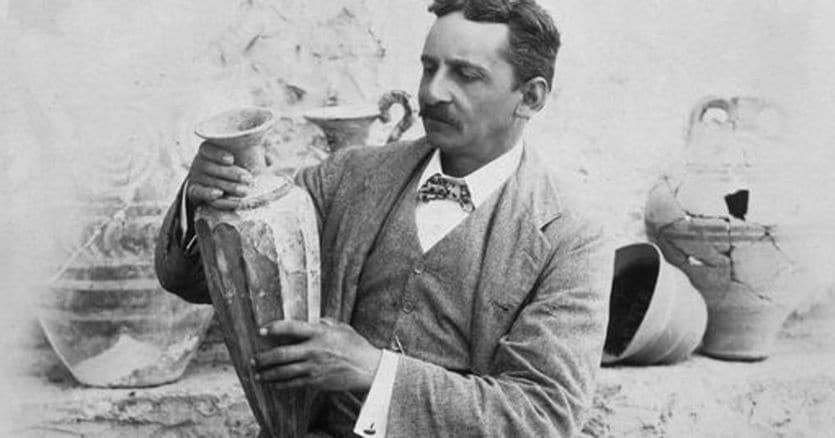The legend has spanned the centuries: King Minos had a labyrinth built on the island of Crete in which to lock up the ferocious Minotaur, a monstrous creature who awaited his sacrificial victims and who was killed by Theseus, thanks to the famous Ariadne’s thread, which made it possible to find the exit.
The English archaeologist Arthur Evans at the beginning of the twentieth century led the excavations that led to the discovery of Minos’ palace. Now the Ashmolean Museum, the Oxford University museum, has created “Labyrinth”, the first exhibition dedicated to Knossos, with over one hundred finds that have left Crete for the first time and over one hundred photos, letters, documents and objects from Evans archives, which the museum holds. The exhibition tells the story of the excavations after centuries of fruitless searches. It had been a scholar from Crete, Minos Kalokairnos, who in 1878 had identified the remains of an ancient building, but the authorities of the Ottoman Empire had prevented him from proceeding with the excavations. In 1900, after the conquest of independence, Evans, director of the Ashmolean Museum, obtained permission from the Cretan authorities to start excavations. The archaeologist found frescoes, ceramic vases, objects, statues, coins, jewels and even a stone throne, and became convinced that Minos’ royal palace and the mythical labyrinth were one and the same. “Since 1903, the museum has kept the most great collection of Minoan archeology thanks to my predecessor, Sir Arthur Evans, who was a true pioneer -, explains Xa Sturgis, director of the Ashmolean -. The exhibition aims to be an exploration of Minoan culture and Greek myths and also of the history of British archaeology”.
The myth of the Minotaur
The exhibition also follows the myth of the Minotaur in its various forms and its longevity over the millennia. While rigorously academic in line with the Ashmolean tradition, the exhibition aims to involve young people as much as possible: for this reason, in addition to the exhibits, there are two video “experiences”.
A 15-minute video by contemporary artist Elizabeth Price imagines objects from the palace of Knossos. A digital reconstruction of the Knossos palace of the creators of the popular video game Assassin’s Creed Odyssey allows a virtual visit to its rooms, a journey through time that takes you back to the 5th century BC and demonstrates how current the myth is even today.

Excavations and research at Knossos still continue and the place is one of the most visited archaeological sites in the world. The exhibition closes with the discovery made in 1979 of ritual human sacrifices at Knossos, which lead back to the myth of the Minotaur. The half-man, half-bull creature never existed, but it represented an unspeakable aspect of the Minoan civilization.
